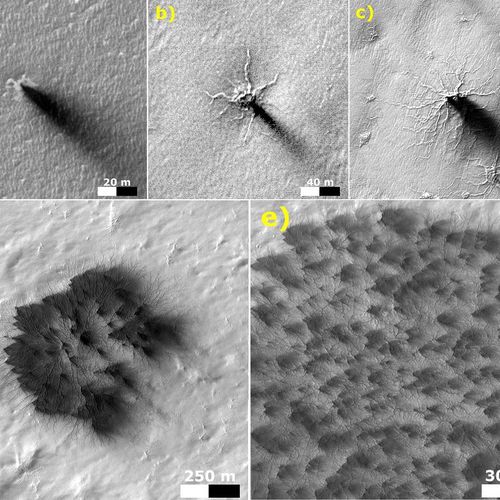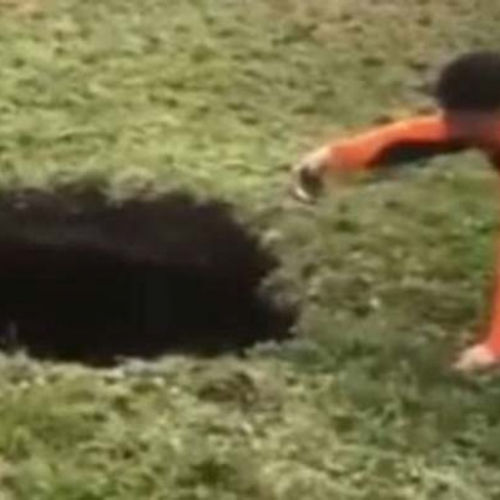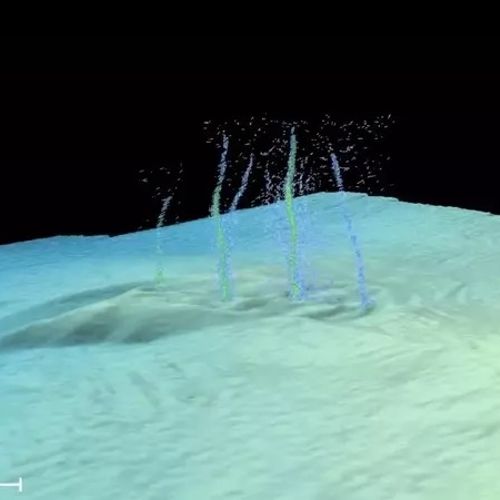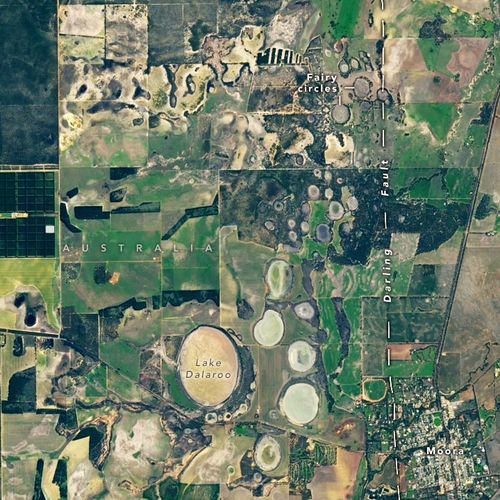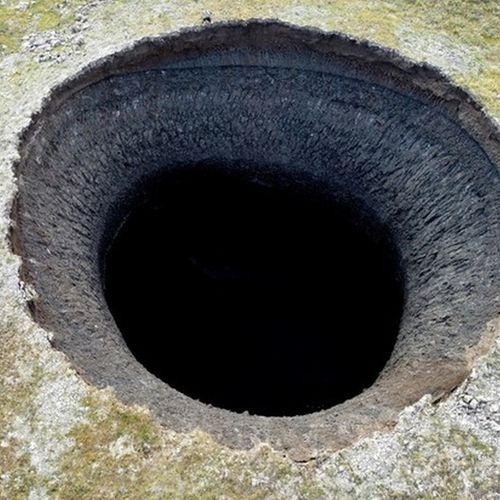
| Added | Mon, 29/01/2024 |
| Источники | |
| Дата публикации | Mon, 29/01/2024
|
| Версии |
Russian scientists have put forward new versions of the appearance of craters in the Yamalo-Nenets Autonomous District. This is reported by RIA Novosti.
One of the reasons for the formation of giant craters on the Yamal Peninsula, one of which appeared near the Bovanenkovsky gas field in 2014, may be methane emissions. The gas is released and tends to the surface due to climate change and melting of the eternal ice. As a result, ice voids filled with methane crack and collapse. The result of such exhausts is the appearance of funnels with a diameter of about 40 meters and a depth of about 50 meters.
The second hypothesis is the appearance of craters from cryopags — underground reservoirs of mineralized waters with a negative freezing point. Methane, which cannot penetrate through the permafrost layers, accumulates in parts of these reservoirs and, when the maximum pressure is reached, breaks through to the surface, forming funnels.
In recent years, through satellite images, about 7,000 long-term heaving mounds and more than 400 lakes have been discovered in the Yamalo-Nenets Autonomous District, at the bottom of which numerous craters of gas emissions have been recorded. This was stated by Vasily Bogoyavlensky, Deputy Director for Science at the Institute of Oil and Gas Problems of the Russian Academy of Sciences, Corresponding member of the Russian Academy of Sciences, who has been investigating the Yamal funnels since their discovery.
Recall that the first crater was discovered in 2014 on the Yamal Peninsula, near the Bovanenkovsky gas field. It was a giant funnel with a diameter along the parapet (an embankment formed as a result of the explosion) of about 40 meters and a depth of more than 50 meters, with vertical walls. She was accidentally discovered in a deserted steppe by pilots of local airlines and posted photos and videos on the Internet.
— The first group of scientists from the Yamalo-Nenets Autonomous Okrug immediately left for the tundra, to the crater located between the coast of the Kara Sea and the valley of the Morda Yakha River, then a group of our institute arrived, - says Vasily Igorevich. — What versions were not put forward at first: from the fall of a meteorite, a rocket shaft — to UFOs!
But when we arrived at the crater, the reason for its formation immediately became clear to us — it was a powerful release of gas. We have been dealing with similar objects for a long time, only in the oceans, where they are called pokmarks, and now we are faced with a similar one, but on land.
According to Bogoyavlensky, gas both on water and on land, most often comes out gradually, like seeps — gas seeps through the surface of the bottom or the earth's crust. At sea or other bodies of water, such a gas output is more noticeable — by bubbles rising from the bottom, but on land it is more difficult to register it.
— At my cottage, in the pond, such bubbles sometimes pop up, there are whole "fields" of them at the Istra reservoir, — the geologist gives an example. — But the largest ones, of course, can be found in the Arctic seas and lakes, as well as on Lake Baikal, where scientists either find them with the help of echo sounders, or they themselves appear before us in the form of beautiful frozen multi-storey gas inclusions in crystal clear ice.
The largest underwater gas craters, according to my interlocutor, are located in the Barents Sea, some of them reach a kilometer in diameter. In 1963, a man—made pokmark crater with a diameter of about 400 m and a depth of more than 30 m was formed in the North Sea as a result of erroneous drilling. In twenty years, this crater has been half filled with precipitation, and in a few decades it will be possible to find it only with special geophysical equipment.
Новости со схожими версиями
Log in or register to post comments



